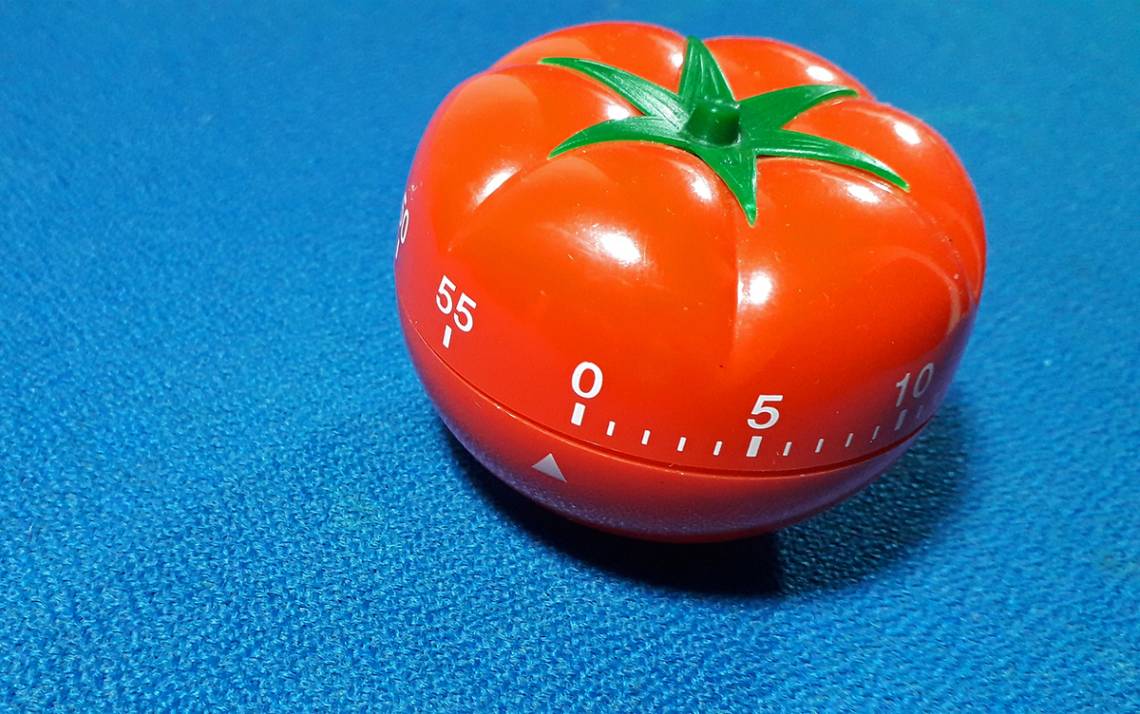A Formula to Better Manage Your Time
The “Pomodoro Technique” focuses on productivity in 25-minute blocks

A small red timer in the shape of a tomato is the key to Sabrina Thomas’ focus.
 She sets the timer for 25-minutes and gets started on single task such as responding to email, writing a transition paragraph in her book about Black doll production in the 20th century or preparing for an upcoming meeting. When the timer beeps, Thomas takes a 5-minute break.
She sets the timer for 25-minutes and gets started on single task such as responding to email, writing a transition paragraph in her book about Black doll production in the 20th century or preparing for an upcoming meeting. When the timer beeps, Thomas takes a 5-minute break.
Her practice is known as the Pomodoro Technique, suggests you work on a big or small task in increments of 25 minutes, taking short breaks after each session to do something unrelated to work.
“The Pomodoro keeps me grounded in reality,” said Thomas, senior associate dean for Trinity College of Arts & Sciences. “I’m now much more aware of what I can complete in a specific chunk of time. I can’t write a book in 25 minutes, but I can outline my ideas or write an introduction.”
The Pomodoro Technique works because it breaks down large projects into smaller obtainable goals, helps you anticipate the duration of tasks and provides breaks to relax, said Jennifer Ahern-Dodson, an assistant professor of the practice in Duke’s Thompson Writing Program and director of the Faculty Write Program.
“The Pomodoro Technique is a time management strategy that allows you to focus on writing, grading papers, responding to emails or any work you can compartmentalize into smaller pieces” said Ahern-Dodson, who teaches the technique in writing workshops. “It’s about improving focus by being mindful about the task at hand and taking breaks to recover. Taking breaks also helps writers avoid the frenetic pace of binge writing.”
Italian entrepreneur Francesco Cirillo developed the Pomodoro Technique in the late 1980s. He named the method “Pomodoro” – Italian for “tomato” – after a tomato-shaped timer he used to track his work while in school.
Here’s how the Pomodoro Technique works, according to francescocirillo.com:
- Choose a large or small task you’d like to complete.
- Set a timer for 25 minutes.
- Work, uninterrupted, until the timer rings.
- Take a short break.
- Repeat the 25 minutes of attention on a task
- Take a longer break – to 20 to 30 minutes – every time you complete four 25-minute pomodoro sessions.
Ahern-Dodson of the writing program encourages Pomodoro users to vary the technique’s time restrictions. She suggests trying 10-minute sessions, followed by a two-minute break, or expanding a session to 50 minutes with a 10-minute break.
 “We all work differently,” Ahern-Dodson said. “See what time allotment helps you build momentum so whatever project you’re working on becomes more manageable.”
“We all work differently,” Ahern-Dodson said. “See what time allotment helps you build momentum so whatever project you’re working on becomes more manageable.”
Ahern-Dodson said the Pomodoro Technique helps her stay focused in several ways. As the timer winds down, there’s a sense of urgency to complete as much of one task as possible. The technique stops you from getting distracted, which breaks momentum. Finally, writing down what you accomplished after 25-minute intervals helps you understand how to use your time.
Angela Zoss, assessment and data visualization analyst for Duke University Libraries, started using the Pomodoro Technique after enrolling in one of Ahern-Dodson’s writing workshops in 2016 for help on her dissertation about information visualization.
Zoss expanded her use of the Pomodoro Technique to include research, computer programming and writing blog posts for Duke Libraries. She’s currently using the technique for a report comparing software applications Duke Libraries staff is considering adopting.
 Zoss said the Pomodoro Technique stops her from checking email or social media while on a task and helps her complete smaller goals between meetings such as completing a footnote or finding a source. The frequent breaks also keep Zoss feeling fresh toward the end of the day.
Zoss said the Pomodoro Technique stops her from checking email or social media while on a task and helps her complete smaller goals between meetings such as completing a footnote or finding a source. The frequent breaks also keep Zoss feeling fresh toward the end of the day.
“There’s a temptation I have where I just want to sit down and power through a project in one sitting, but that’s not healthy,” Zoss said. “The Pomodoro Technique helps me break up my work into shorter blocks. My focus and productivity are a lot better because of it.”
Got a story idea or news to share? Share it with Working@Duke